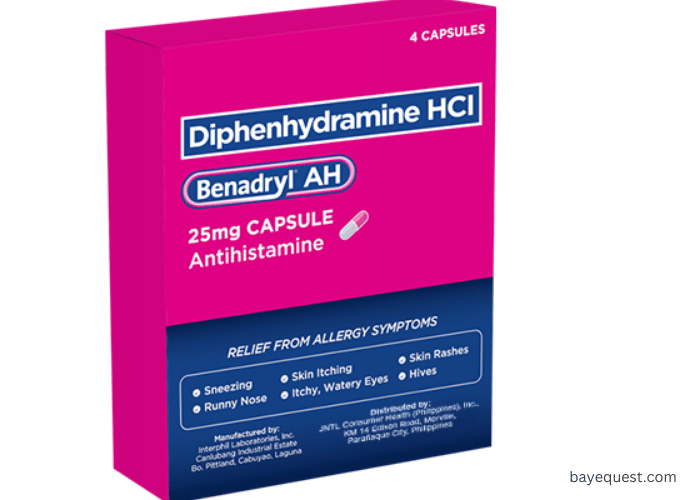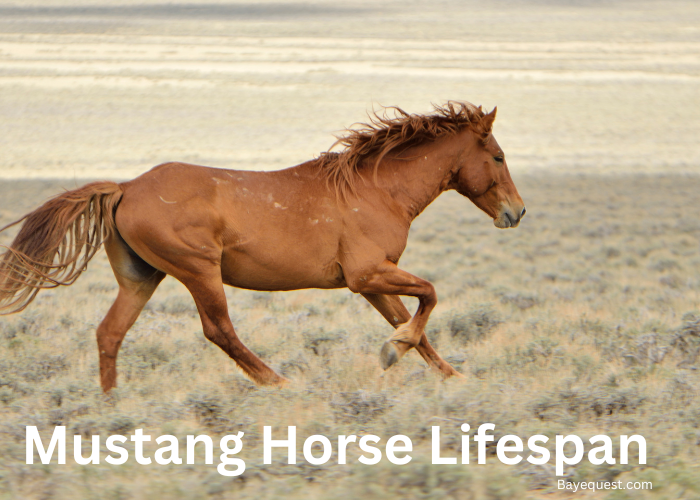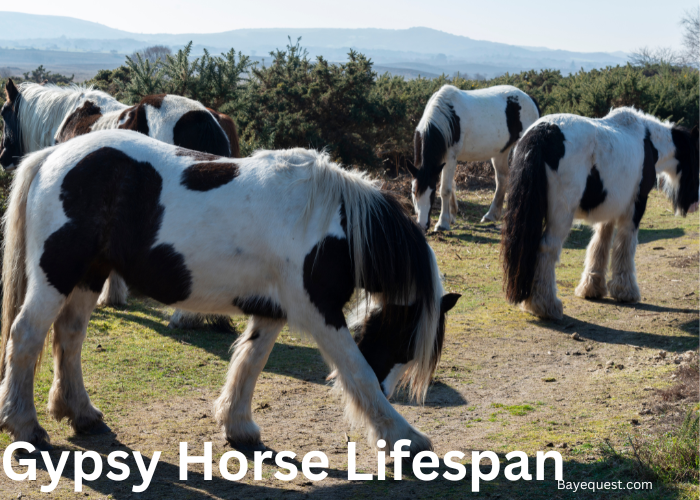When your horse struggles with allergies, itching, or hives, finding relief is important. You might have heard that Benadryl can help. But is it safe for horses?
Before giving any medication, it’s crucial to understand how it works. The right dose matters, and giving too much or too little can be risky.
In this post, we’ll cover everything you need to know about using Benadryl for horses.
You’ll learn about proper dosage, possible side effects, and when to call the vet for advice.
Benadryl Dose for Horses: Key Takeaway
Benadryl (diphenhydramine) is an antihistamine that helps horses with allergies, hives, and itching. It can relieve symptoms like swelling and discomfort caused by allergic reactions. Benadryl is often used to manage mild allergic responses. Always follow proper dosage guidelines and consult a vet for the best results.
What is Benadryl?
Benadryl is a brand name for the drug diphenhydramine. It is an antihistamine, which means it blocks histamine in the body.
Histamine is a chemical released during allergic reactions. When histamine is released, it causes symptoms like itching, swelling, and hives.
In horses, Benadryl can help reduce allergic reactions. By blocking histamine, it prevents these symptoms from getting worse.
However, Benadryl does not cure the allergy; it only helps manage the symptoms.
Diphenhydramine works by binding to histamine receptors in the body. This stops histamine from attaching to these receptors and triggering allergic responses.
Benadryl is commonly used for allergies, insect bites, and sometimes even skin rashes in horses.
Diphenhydramine can cause drowsiness in both humans and horses. Always consult a veterinarian before giving Benadryl to a horse.
Can Horses Take Benadryl?
Yes, horses can take Benadryl, but it should only be given under the guidance of a veterinarian.
Benadryl, or diphenhydramine, is generally safe for horses when used correctly.
It’s commonly used to manage allergic reactions, such as hives, itching, and swelling caused by insect bites, pollen, or other allergens.
However, the dosage for horses is much different than for humans, and giving the wrong amount can lead to serious problems.
Horses require a larger dose based on their weight, which can vary between animals.
In some cases, horses may have adverse reactions, such as drowsiness, dry mouth, or even more severe side effects.
Pregnant mares, horses with certain health conditions, or those on other medications may not be suitable candidates for Benadryl.
Uses of Benadryl
Diphenhydramine, has several uses in horses, primarily related to managing allergic reactions. Here are its common applications:
1. Allergic reactions. Benadryl is often used to treat mild allergic responses caused by environmental factors like pollen or dust. It helps reduce symptoms such as itching, swelling, and skin irritation.
2. Insect bites or stings. Horses can develop hives or swelling from insect bites, especially from bees or wasps. Benadryl can help ease these reactions by blocking the release of histamine.
3. Hives (Urticaria). If a horse develops hives from an allergic response, Benadryl can be used to calm the reaction, reducing the severity of the bumps and itchiness.
4. Itching. In cases where horses experience general itching, Benadryl may help soothe the irritation, making the horse more comfortable.
5. Seasonal allergies. Horses, like humans, can suffer from seasonal allergies. Benadryl can be used to manage symptoms, especially if they become severe enough to impact the horse’s quality of life.
Benadryl Dosage for Horses
The dosage of Benadryl (diphenhydramine) for horses is calculated based on the horse’s weight.
A general guideline is around 0.5 to 1 mg per pound of body weight, given two to three times daily.
For example, a 1,000-pound horse might receive between 500 to 1,000 mg of Benadryl per dose.
Benadryl is available in several forms, including tablets, capsules, and liquid. Liquid forms can be easier to administer, especially if mixed with feed or given via a syringe.
Administration of Benadryl
Administering Benadryl to horses can be done in a few different ways, depending on the form of the medication and the horse’s preference.
Here are common methods:
Mixing with feed. If using Benadryl in pill or capsule form, it can be crushed and mixed into the horse’s feed. This is a straightforward method but may not work if the horse detects the taste or refuses to eat.
Using a syringe. For liquid Benadryl, you can use a syringe to give the dose orally. Simply draw the appropriate dose into the syringe, insert it into the horse’s mouth (towards the back), and release the liquid. This method ensures the full dose is administered.
Hiding in a treat. If your horse is picky, you can hide the crushed pills inside treats like apples or carrots to mask the taste. This method can be useful for horses that don’t easily accept medication.
Top-dress method. For capsules or tablets, sprinkling the crushed form over moist feed or adding it to a small amount of molasses or applesauce can help ensure they consume the full dose.
Table: Dosage and Administration Summary
| Method | Horse Weight (lbs) | Dosage (mg/lb) | Form | Period | Duration |
| Mixing with feed | 500-1000 | 0.5 – 1 mg | Crushed Pills/Capsules | 2-3 times daily | As prescribed by vet |
| Using a syringe | 500-1000 | 0.5 – 1 mg | Liquid | 2-3 times daily | As prescribed by vet |
| Hiding in a treat | 500-1000 | 0.5 – 1 mg | Crushed Pills/Capsules | 2-3 times daily | As prescribed by vet |
| Top dress method | 500-1000 | 0.5 – 1 mg | Crushed Pills/Capsules | 2-3 times daily | As prescribed by vet |
Diphenhydramine Drug Interactions
Diphenhydramine, the active ingredient in Benadryl, can interact with other medications, leading to adverse effects in horses.
Here are common drug interactions to be aware of:
CNS depressants. Diphenhydramine can enhance the sedative effects of other central nervous system depressants, such as tranquilizers, sedatives, or anesthetics. This can lead to increased drowsiness and a higher risk of respiratory depression.
Anticholinergic drugs. Combining diphenhydramine with medications that have anticholinergic effects (e.g., atropine) can intensify side effects like dry mouth, difficulty urinating, or constipation.
Monoamine Oxidase Inhibitors (MAOIs). Diphenhydramine should not be used with MAO inhibitors, as this can lead to dangerous increases in blood pressure or heightened sedative effects.
Certain pain relievers. Opioids and certain pain relievers may interact with diphenhydramine, causing more profound sedation or respiratory issues.
Read also: Acepromazine Drug for Horses.
Side Effects of Benadryl in Horses
Benadryl, like any medication, can cause side effects in horses. While it is generally safe when used under a veterinarian’s guidance, here are some common and potential side effects to watch for:
Drowsiness. One of the most common side effects, Benadryl can cause sedation or drowsiness in horses, leading to lethargy or a lack of energy.
Dry mouth. Some horses may experience dry mouth or decreased saliva production after taking Benadryl.
Urinary retention. In rare cases, horses might have difficulty urinating, especially if they have underlying conditions affecting the urinary system.
Gastrointestinal upset. Horses could experience mild stomach upset, including reduced appetite or discomfort. This is less common but can happen.
Rapid heart rate. In some cases, Benadryl can cause an increase in heart rate (tachycardia). This is more likely with higher doses or if the horse has a preexisting heart condition.
Excitability or restlessness. Instead of sedation, some horses might show increased excitability or restlessness as a paradoxical reaction.
Allergic reaction. Though rare, some horses could develop an allergic reaction to diphenhydramine, which may worsen symptoms.
See also: Side Effects of Osteomax in Horses.
Precautions and When to Avoid Benadryl
Before giving Benadryl to a horse, it’s essential to take certain precautions to ensure it’s safe and effective.
Here are key precautions and situations when Benadryl should be avoided:
1. Pregnant or nursing mares
Benadryl should generally be avoided in pregnant or nursing mares unless specifically advised by a vet. The safety of diphenhydramine in these cases is not well-established.
2. Horses with pre-existing conditions
If your horse has heart problems, glaucoma, urinary issues, or gastrointestinal conditions, Benadryl might not be safe. It could exacerbate these conditions, particularly with prolonged use.
3. Interaction with other medications
If your horse is taking other medications, especially sedatives, antihistamines, or anticholinergics, there could be dangerous interactions. Consult a vet to avoid harmful combinations.
4. Avoid long-term use without vet guidance
Benadryl is typically for short-term relief. Long-term use without proper monitoring can lead to side effects or mask underlying health issues that need to be addressed differently.
How to Identify Benadryl Overdose
If your horse has had too much Benadryl, there are a few signs to watch for.
One of the first things you might notice is extreme drowsiness. Your horse may seem overly tired or unresponsive.
On the flip side, some horses get restless or agitated instead. Rapid breathing or a fast heartbeat can also be signs of trouble.
You might notice dry mouth, or your horse might have trouble swallowing or urinating. In severe cases, muscle tremors or seizures can occur.
If any of these symptoms show up, call the vet right away. An overdose can be serious, so you need to get help as fast as possible.
Also, check out: What is Ketamine Used for in Horses?
Alternative Medications for Allergies in Horses
There are several alternative medications to Benadryl for treating allergies in horses. Each of these medications works in different ways to help manage allergic reactions and symptoms:
Hydroxyzine. This is another antihistamine that works similarly to Benadryl but is often more effective in horses. It’s used to treat skin allergies, hives, and itching.
Cetirizine (Zyrtec). This newer generation antihistamine has fewer sedative effects than Benadryl. It’s a popular choice for horses that need allergy relief without becoming drowsy.
Corticosteroids (Prednisone or Dexamethasone). For more severe allergic reactions, corticosteroids are sometimes used.
These drugs reduce inflammation and are highly effective. However, long-term use can cause side effects, so they should be used with caution and under a vet’s guidance.
Allergy shots (Immunotherapy). For chronic allergies, allergy shots can be administered over time to reduce sensitivity to specific allergens. This is a long-term solution that requires testing and veterinary oversight.
Omega-3 Fatty Acid Supplements. While not a medication, omega-3 supplements help reduce inflammation and improve skin and coat health.
Read also: What is Dimethyl Sulfoxide?
FAQs
What are some natural antihistamines that can be given to horses?
Natural antihistamines like quercetin, a plant compound, may help reduce allergic reactions in horses by inhibiting histamine release. Omega-3 fatty acids, found in flaxseed or fish oil, can also reduce inflammation, while vitamin C supports immune function.
Can antihistamines be used to treat hives in horses?
Yes, antihistamines can treat hives in horses by blocking histamine, which causes allergic reactions. Medications like Benadryl, hydroxyzine, or cetirizine can reduce itching and swelling.
Benadryl Dose for Horses: Conclusion
When it comes to using Benadryl for horses, knowing the right dosage and method is crucial. It can provide relief for allergies, hives, and itching, but always check with a vet before giving it to your horse.
Pay attention to side effects and any signs of overdose. There are also other medications and natural alternatives that may work better for your horse.
The most important thing is to prioritize your horse’s safety and comfort by following professional advice. With the right approach, you can help your horse feel better and manage their symptoms effectively.








